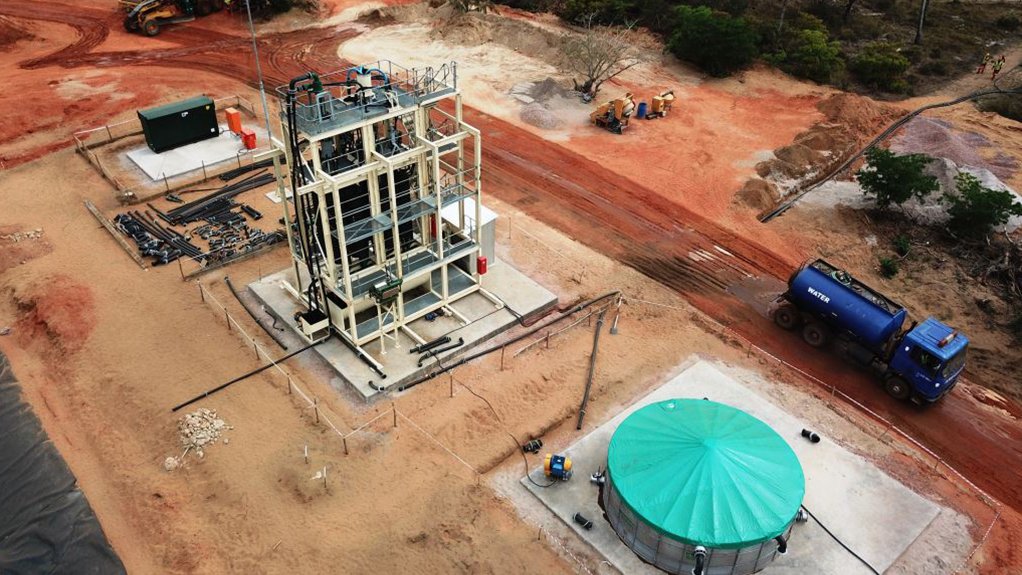Diversified resources company Savannah Resources is eagerly awaiting the last outstanding mining lease approval for the Mutamba heavy mineral sands joint venture (JV) project, in the Gaza and Inhambane provinces of Mozambique, says company CEO David Archer.
Savannah has a consortium agreement with diversified mining company Rio Tinto, which combines Savannah’s Jangamo project with Rio Tinto’s adjacent Mutamba project, which includes three deposit areas – Jangamo, Dongane and Ravene – and the Chilubane deposit, which is located 180 km south-west of the Mutamba project.
Archer notes that, importantly, the consortium includes an offtake agreement on commercial terms for the sale of 100% of production to Rio Tinto and will likely go to Rio Tinto’s Richards Bay Minerals operation in KwaZulu-Natal, South Africa.
The current mineral resource estimate for the Mutamba project is 4.4-billion tonnes at 3.9% total heavy minerals comprising both indicated and inferred category material and containing ilmenite, rutile and zircon. He highlights that it is one of the largest undeveloped mineral sands accumulations in the world.
Archer says the completion of the prefeasibility study (PFS) for Mutamba has been delayed because Savannah awaits the granting of the mining lease. Without a granted operative tenement, the required confirmatory drilling to feed into the study cannot be completed.
Savannah’s overall objective is to build, together with Rio Tinto, a commercial mineral sands presence in Mozambique, delivering, through Rio Tinto’s offtake, a stable supply of titanium feedstock to global markets.
Once production has started, the company will target production of 456 000 t/y of ilmenite and 118 000 t of nonmagnetic concentrate (rutile and zircon).
“We think that Mutamba could play a material role in terms of providing titanium feedstock for Richards Bay Minerals in the 2020s,” Archer advances.
He notes that demand for titanium feedstock is currently relatively stable, while there are supply constraints, particularly from India and Vietnam, which are improving prices for ilmenite and rutile.
“There are very few new mines going into production owing to the lack of new discoveries and we think that this, coupled with the demand and supply constraints, will provide us with the right environment for a development decision regarding Mutamba,” Archer posits.
Savannah is the operator of the project, with a 20% interest in the consortium with Rio Tinto. The company can increase its interest to 35% upon delivery of a PFS and 51% upon delivery of a definitive feasibility study.
Meanwhile, the company is in the latter stages of developing one of Europe’s largest lithium deposits, the Mina do Barroso lithium project, in northern Portugal, which could play a major role in providing lithium for the growing European battery market for electric vehicles.
The project is scheduled for production in late 2020 and could provide up to a third of Europe’s lithium requirement in 2025 and up to a quarter of its lithium requirement in 2030.
Archer notes that the project is well placed to play a major role in helping to provide Europe with partial independence in the supply of the strategic battery metal.
While Savannah was not affected by cyclones Idai or Kenneth which hit Mozambique in March and April respectively, the company was very concerned about the country being affected by two cyclones in quick succession and the resulting major loss of life and hardship, says Archer.
Savannah has donated food and medicine to Mozambique disaster relief agency the National Disasters Management Institute and some of the company’s staff in Mozambique and London have also made individual donations.
“We hope, in our own small way, to help alleviate some of the hardship that Mozambicans are experiencing,” he concludes.
Edited by: Mia Breytenbach
Creamer Media Deputy Editor: Features
EMAIL THIS ARTICLE SAVE THIS ARTICLE
ARTICLE ENQUIRY
To subscribe email subscriptions@creamermedia.co.za or click here
To advertise email advertising@creamermedia.co.za or click here















